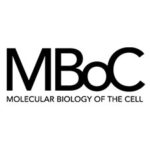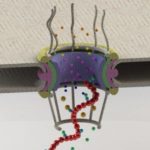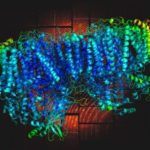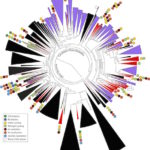In two American Society for Cell Biology (ASCB) award essays published in the society’s journal Molecular Biology of the Cell, Mina Bissell, distinguished scientist in the Biological Systems & Engineering Division, and Eva Nogales, faculty structural biologist in the Molecular Biologist in the Molecular Biophysics & Integrated Bioimaging Division, each candidly describe their inspiring, personal journeys.
Gatekeeping Proteins to Aberrant RNA: You Shall Not Pass
In a new study, faculty scientist Mohammad Mofrad from the Molecular Biophysics & Integrated Bioimaging Division, together with his Ph.D. student Mohammad Soheilypour, shed light on a complex system of cell regulation that acts as a form of quality control for the transport of genetic information out of the nucleus. Getting a more complete picture of how genetic information gets expressed in cells is important in disease research, the researchers say.
“Some components of this machinery are dysregulated in various types of cancers,” explains Mofrad. “Understanding the molecular mechanism of genetic information transport and quality control would substantially improve the current knowledge about various types of cancers and other human diseases.” Their findings were published in the journal Scientific Reports of November 2. Read the full story on the Berkeley Lab News Center.
Biosciences Technology Recognized with R&D 100 Award
The Compact Dynamic Beamstop (CDBS), a compact, customizable tool for X-ray scattering experiments providing real-time data, developed by Diane Bryant and Simon Morton of the Molecular Biophysics & Integrated Bioimaging Division, has been recognized with a 2016 R&D 100 Award. It was one of 100 technologies and services introduced last year deemed most significant by an independent panel of judges.
R&D Magazine‘s R&D 100 Awards, established 54 years ago, presented this year’s awards at the November 3 annual black-tie awards dinner in Washington, D.C. Four other technologies developed by researchers at Berkeley Lab were among the awardees, including enabling energy-saving cool roofs, long-lived lithium-sulfur batteries, safer drinking water, and reduced carbon dioxide in the atmosphere. Read more at the Berkeley Lab News Center.
Biosciences Researchers to Support Two Exascale Projects
Biosciences researchers will contribute their expertise to two new projects, “Data Analytics at the Exascale for Free Electron Lasers” and “Exascale Solutions for Microbiome Analysis,” funded by DOE to develop cutting-edge research applications for next-generation supercomputers as part of DOE’s Exascale Computing Project (ECP), a component of President Obama’s National Strategic Computing Initiative that intends to maximize the benefits of high-performance computing for U.S. economic competiveness, national security and scientific discovery. ECP announced its first round of funding on September 7 with the selection of 15 application development proposals for full funding and seven proposals for seed funding.
New Bacteria Groups, and Stunning Diversity, Discovered Underground
Lawrence Berkeley National Laboratory (Berkeley Lab) and UC Berkeley researchers have uncovered new clues about the roles of subsurface microbes in globally important cycles. Jill Banfield, senior faculty scientist in the Earth & Environmental Systems Area and professor at UC Berkeley, led the research team that studied soil and water samples containing subsurface microbes collected at a Colorado River basin field site. DNA sequencing of these microbes was performed at the Joint Genome Institute (JGI), a DOE Office of Science User Facility.
As reported online October 24 in the journal Nature Communications, the scientists netted genomes from 80 percent of all known bacterial phyla, a remarkable degree of biological diversity at one location. They also discovered 47 new phylum level bacterial groups, naming many of them after influential microbiologists and other scientists, including ten in the Biosciences Area (with the form Candidatus Surnamebacteria). Phyla-level names have been proposed for Molecular Biophysics & Integrated Bioimaging Division’s Cheryl Kerfeld, Krishna Niyogi, and Jennifer Doudna; Environmental Genomics & Systems Biology’s Louise Glass, Kathleen Ryan, Steven Brenner, Mary Wildermuth, and Judy Wall; and the JGI’s John Vogel and Tanja Woyke. The researchers analyzed the metabolic interactions of these and other subsurface microbes to better understand their roles in ecosystem resilience. Read the full story at the Berkeley Lab News Center.
- « Previous Page
- 1
- …
- 61
- 62
- 63
- 64
- 65
- …
- 78
- Next Page »
Was this page useful?








